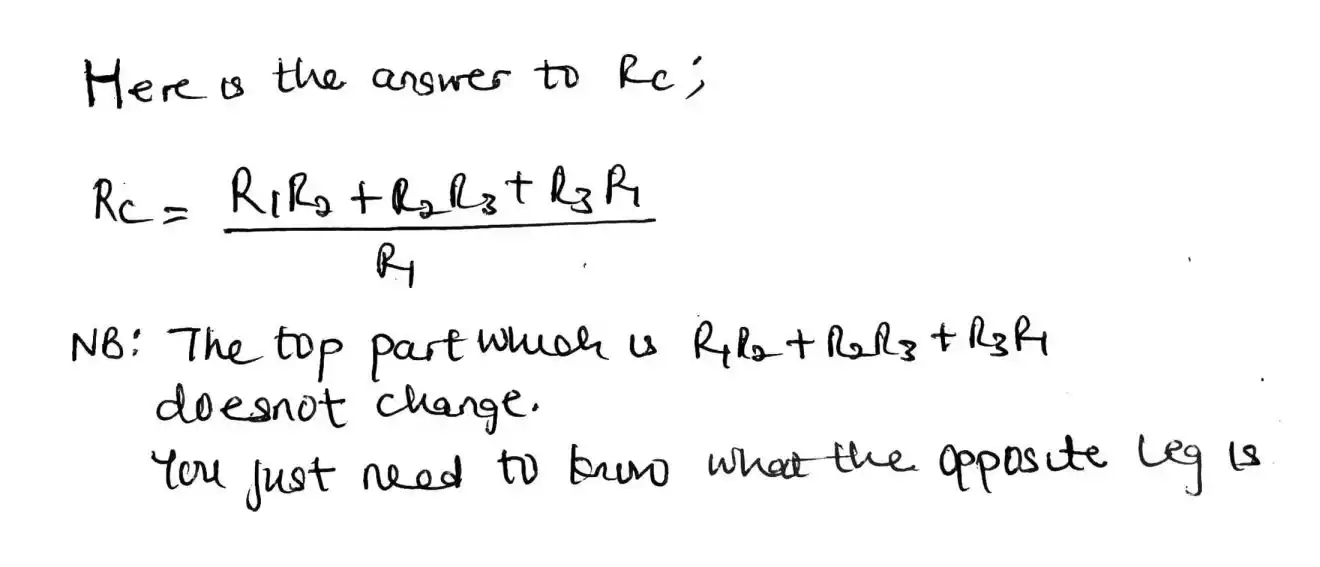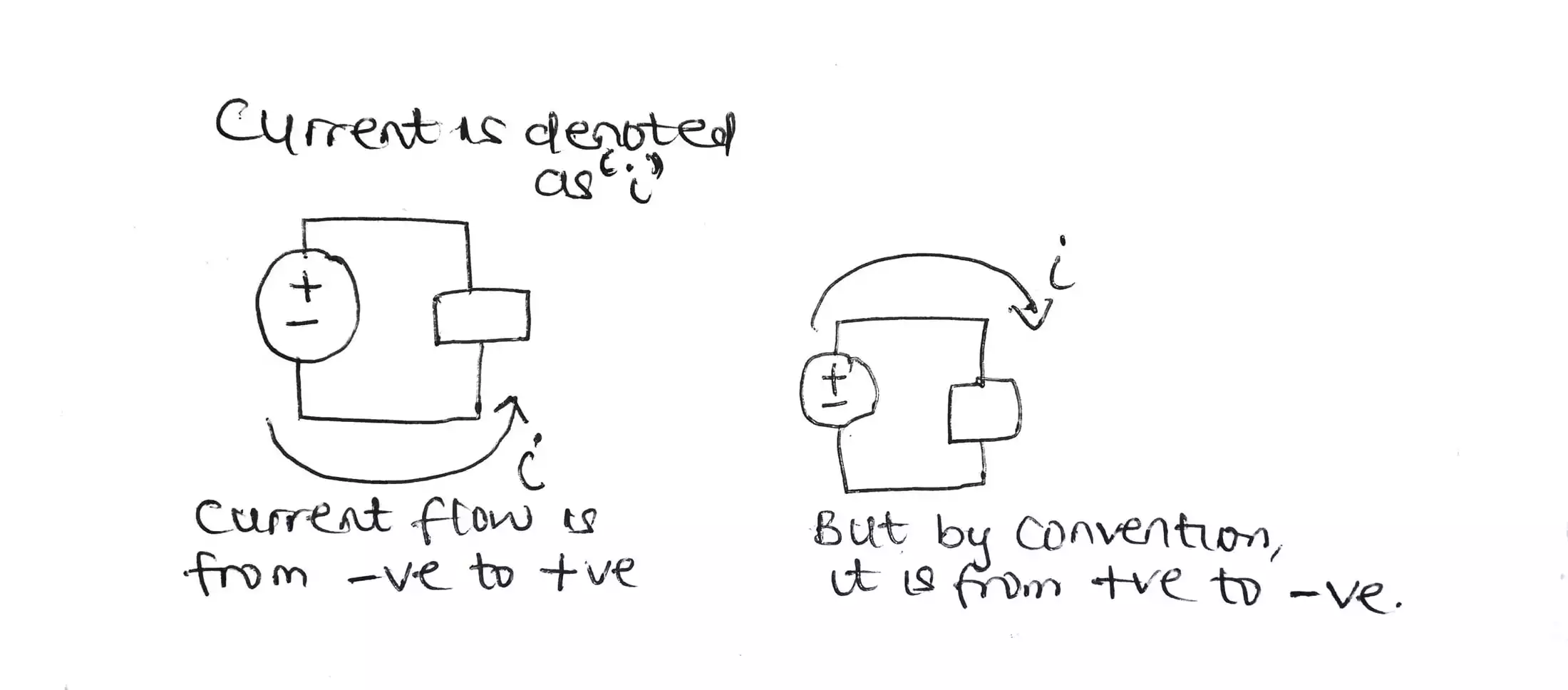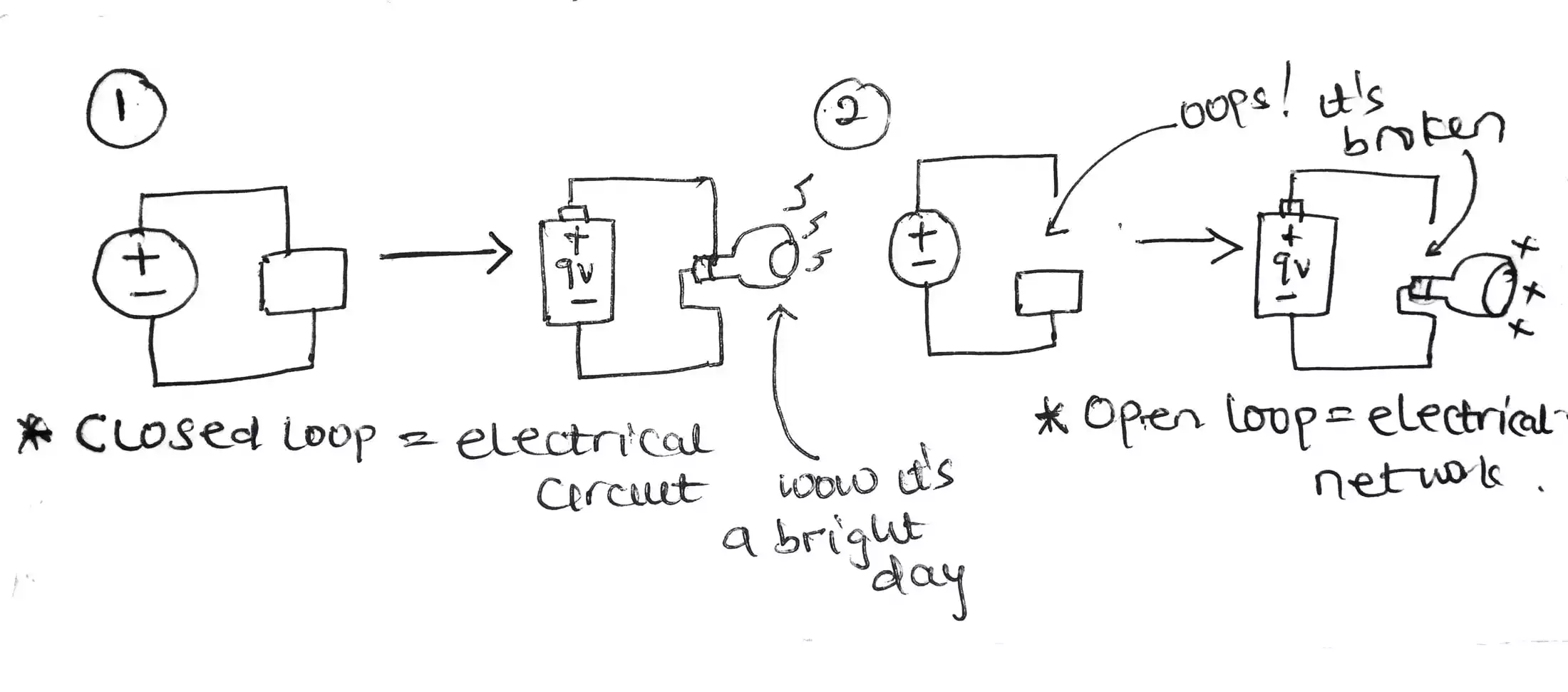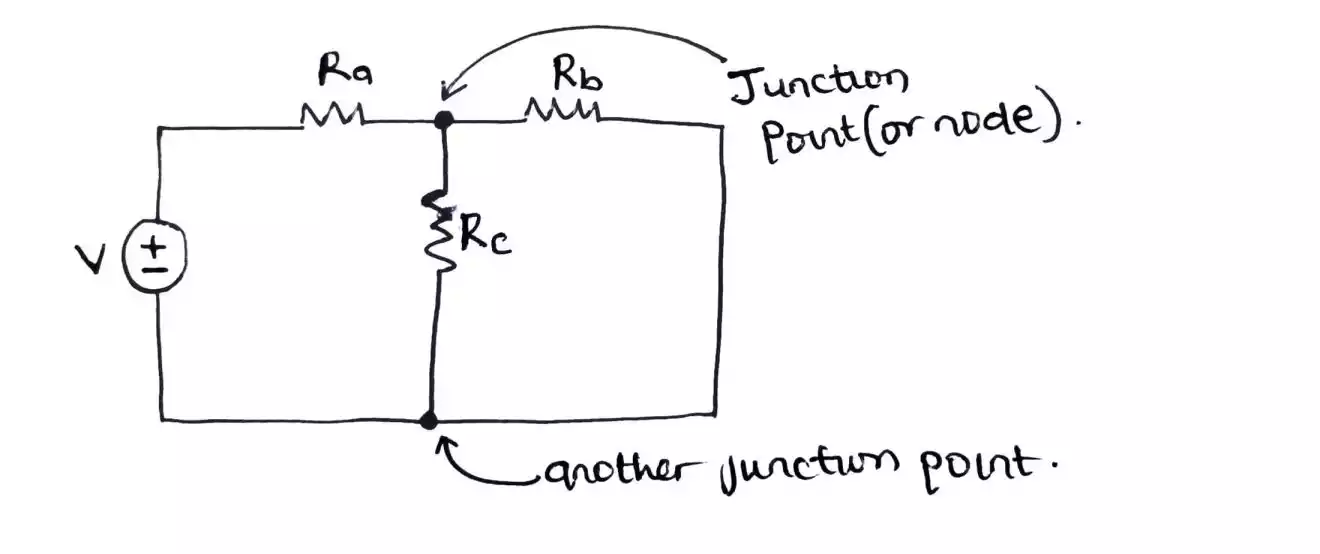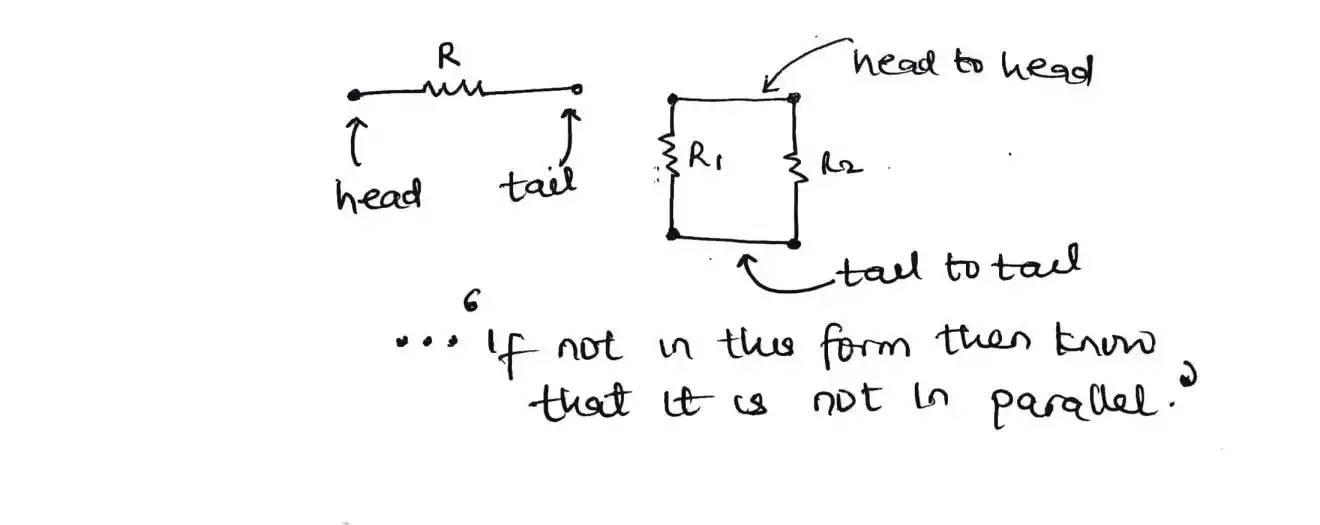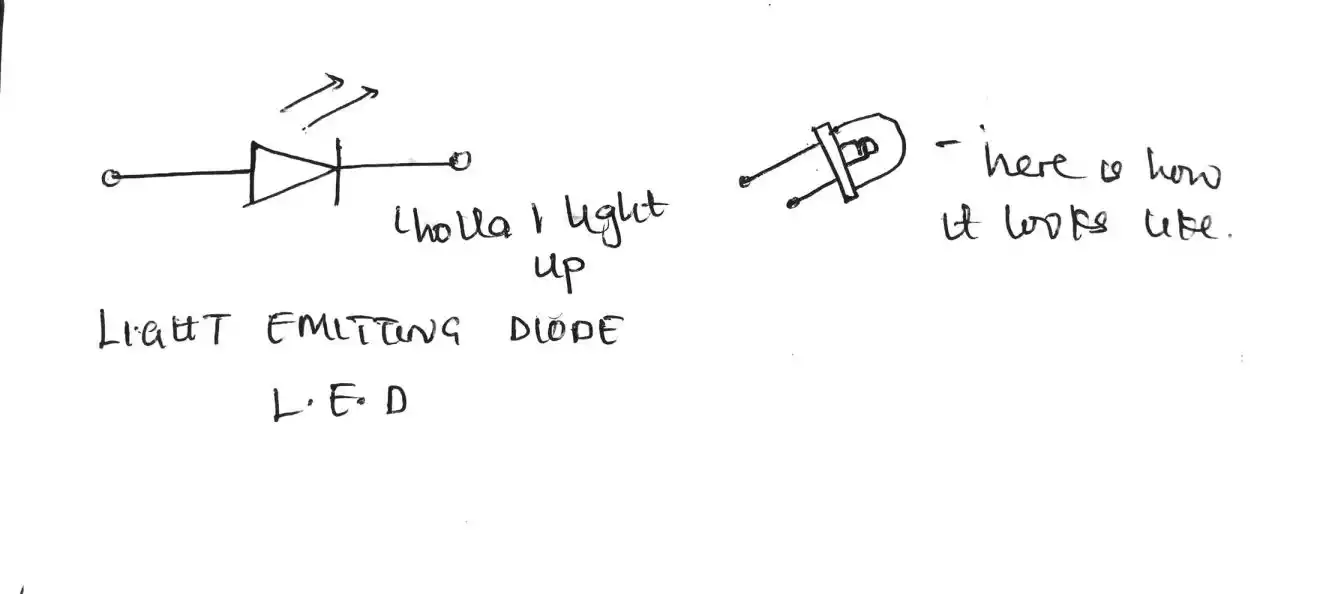Why and how do we do star to delta or delta to star transformation
The star and delta transformation involves converting from star to delta or delta to star and we do this when our resistors are not connected in parallel or series.
This technique is quite useful but most time student do forget the formula to be used quickly but, in this section I will give you a visual tip to never forget this so let’s start.
The way delta and star are connected is illustrated below with a comparison with that of series and parallel connection of resistors.
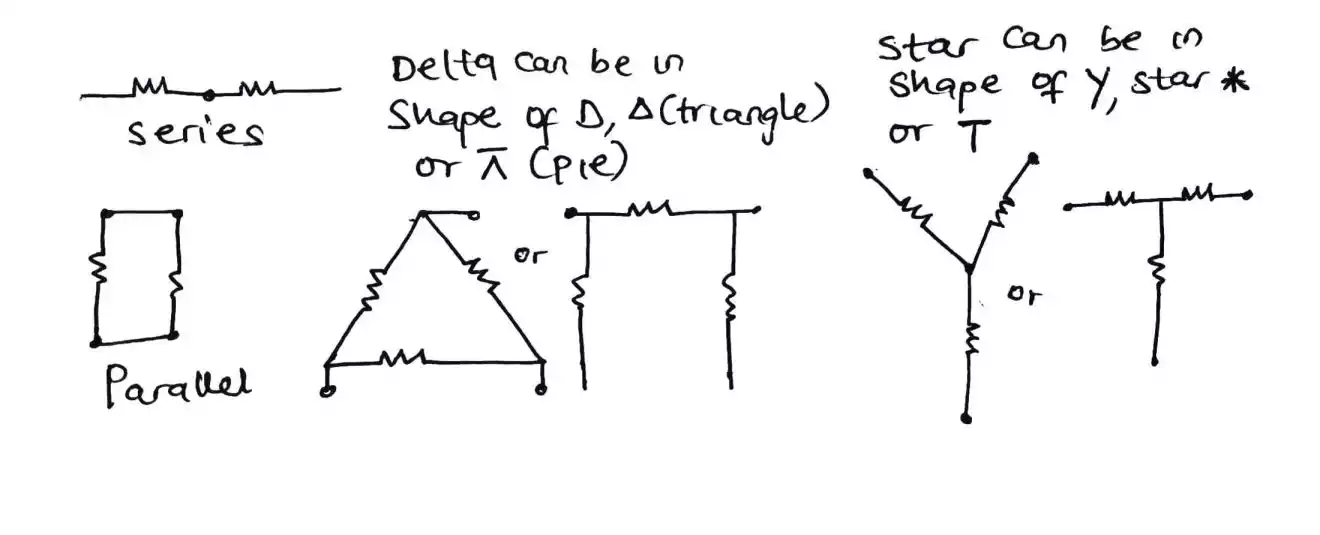
The delta can be structured in two ways as having a triangle shape or pie shape while the star has a wye or T shape so make sure to note that.
Small nugget
The star is sometimes referred to as wye while delta is referred to as pi.
The transformation or conversion from delta to star
While we will be solving circuits, sometimes we would encounter resistors connected in a form that’s not easier to work with except that we transform it to another form and then solve, so that’s why we perform this conversion.
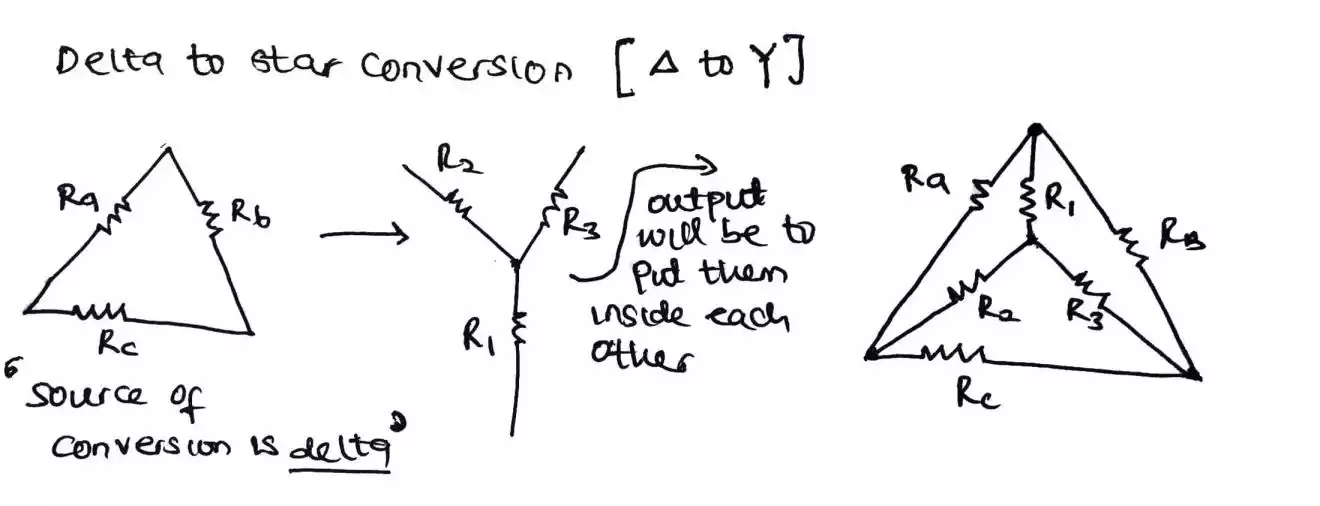
So to convert delta to star, it is done as follows, though the formula is stated as -
The formula for delta to star conversion
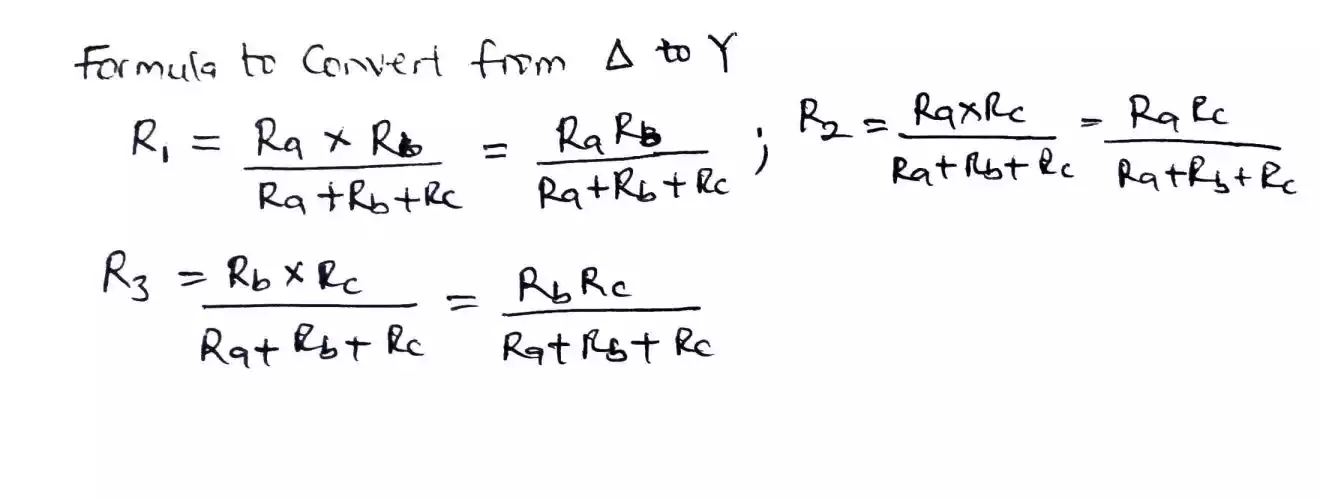
How to remember the formula for delta to star conversion
So let’s recall this formula by starting with R1.
Looking at R1, we can see that the node at the top of R1 has two resistors from the delta network, connected or tied to it. So in that case, we say that there are 2 legs affecting R1 which are Ra and Rb.
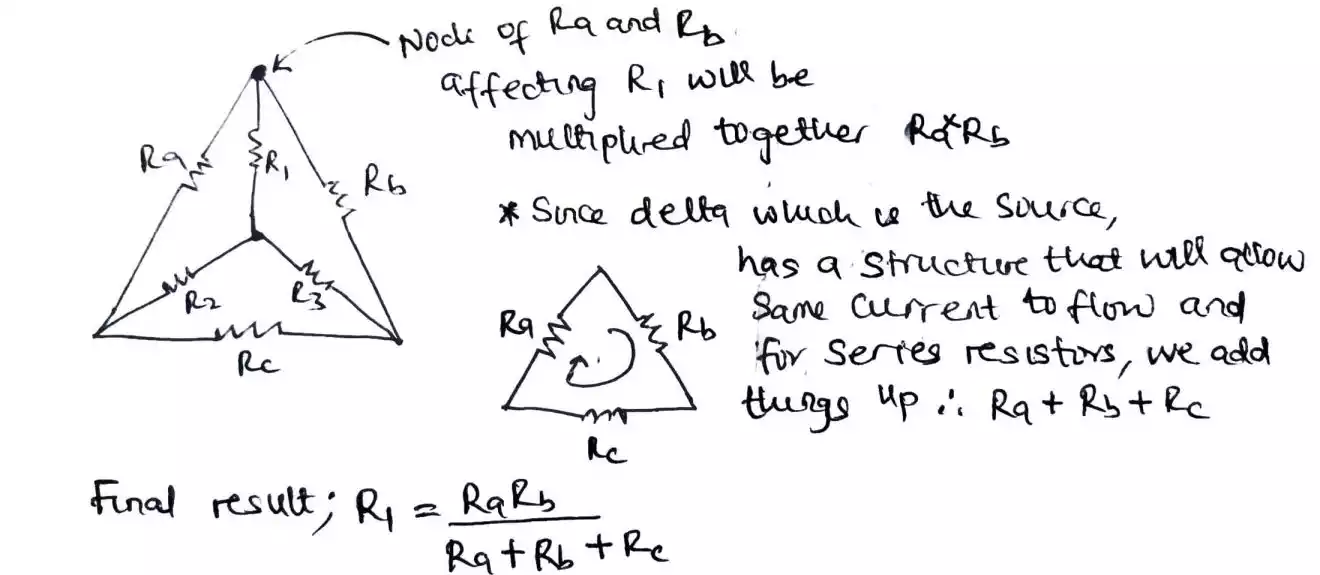
Then, since the delta is our source of conversion and also are connected in series (remember in series connected resistors, the values are added and the same current flows through them) therefore, we sum up (Ra + Rb + Rc) and then divide it by our first result which is Ra and Rb (remember we need to multiply Ra and Rb since they are affecting R1).
Thus the transformation yields R1 = (RaRb) / (Ra + Rb + Rc).
Doing same for R2, we get R2 = (RaRc) / (Ra + Rb + Rc) and for R3 what will it be by doing it yourself without looking at the answer.
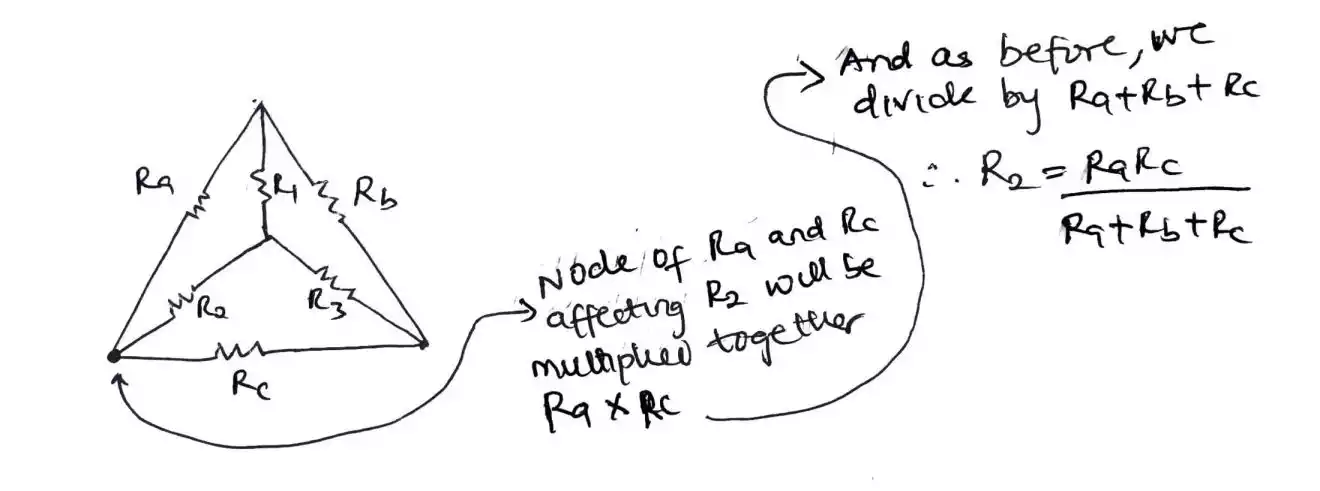
If you got the answer right, that’s good and in essence you can see, it's only the leg tied to our resistor in focus that matters since the bottom part (Ra + Rb + Rc) is same for R1, R2 and R3.
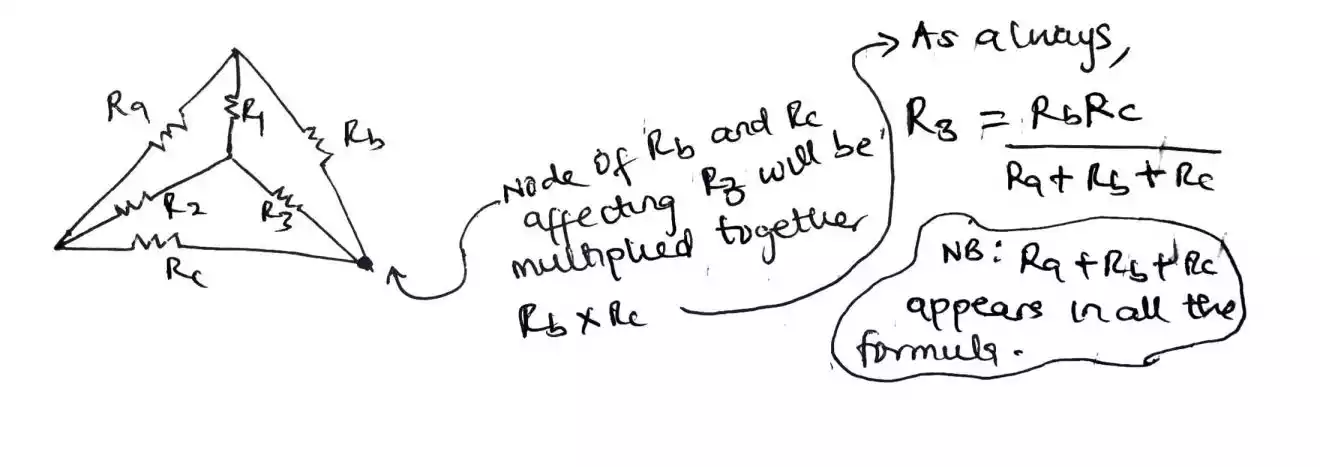
The transformation or conversion from star to delta
Firstly, in this transformation, we are to find Ra, Rb and Rc as oppose to the last section where we are to find R1, R2 and R3.
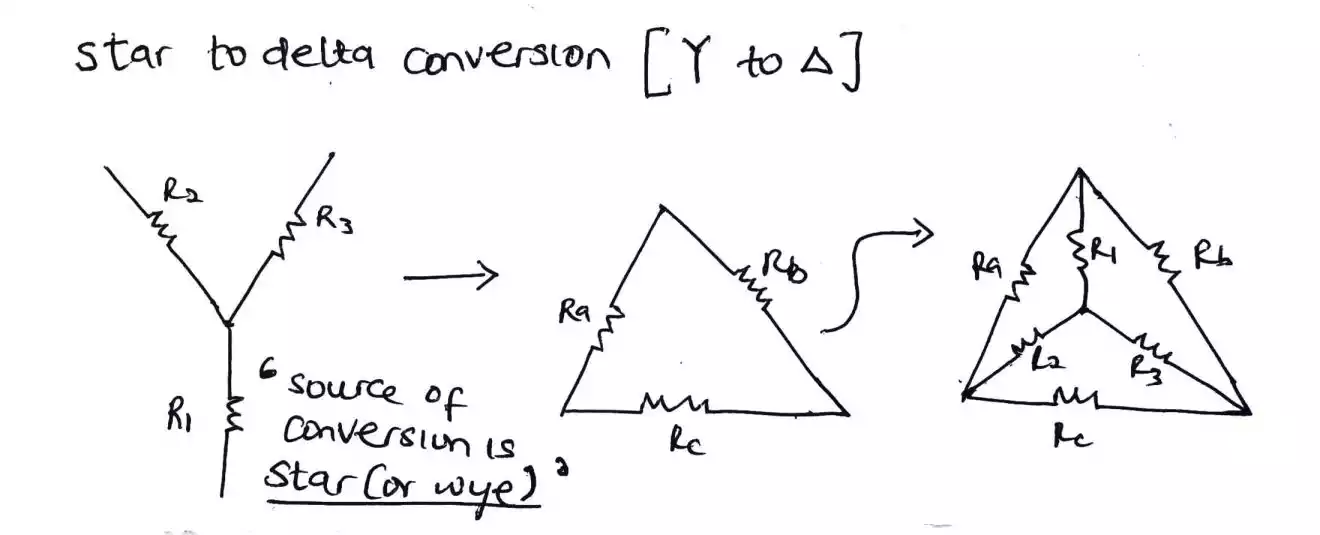
The formula is stated as
Ra = (R1R2 + R2R3 + R3R1) / R3, Rb = (R1R2 + R2R3 + R3R1) / R2 and Rc = (R1R2 + R2R3 + R3R1) / R1
The formula for star to delta conversion
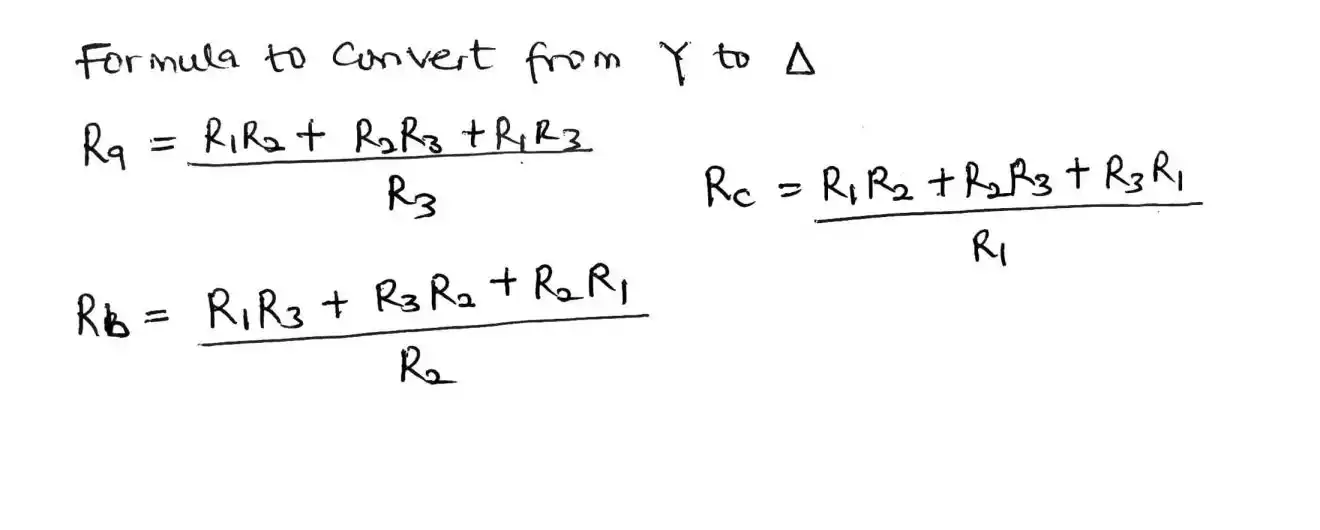
How to remember the formula for star to delta conversion
Now let’s recall the formula using our tip. First of all, you can see that Ra is affected by R1 and R2. And this R1 and R2 are also joined at a middle point to each other with R3 so in that case we can’t just apply same rule as the previous one we did for converting from delta to star.
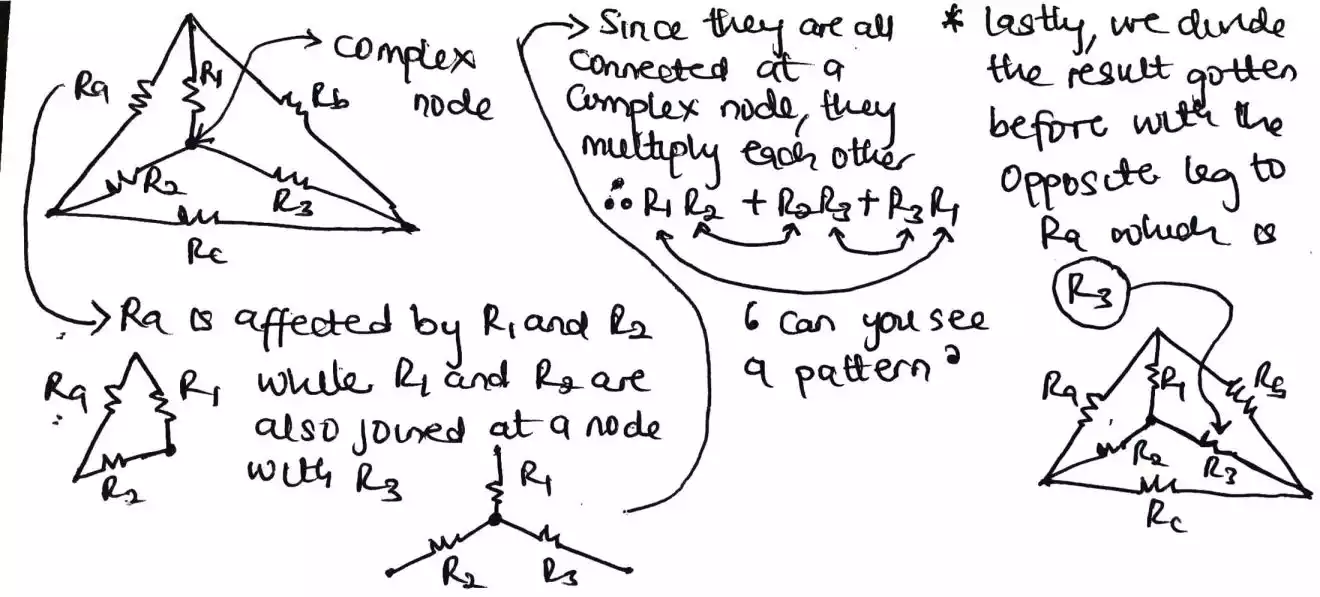
But what we need to do is, since R1 and R2 are tied to Ra and also R1 and R2 are connected at a node with R3 then we just multiply R1R2 and then add R2R3 and lastly add R3R1 which yields this.
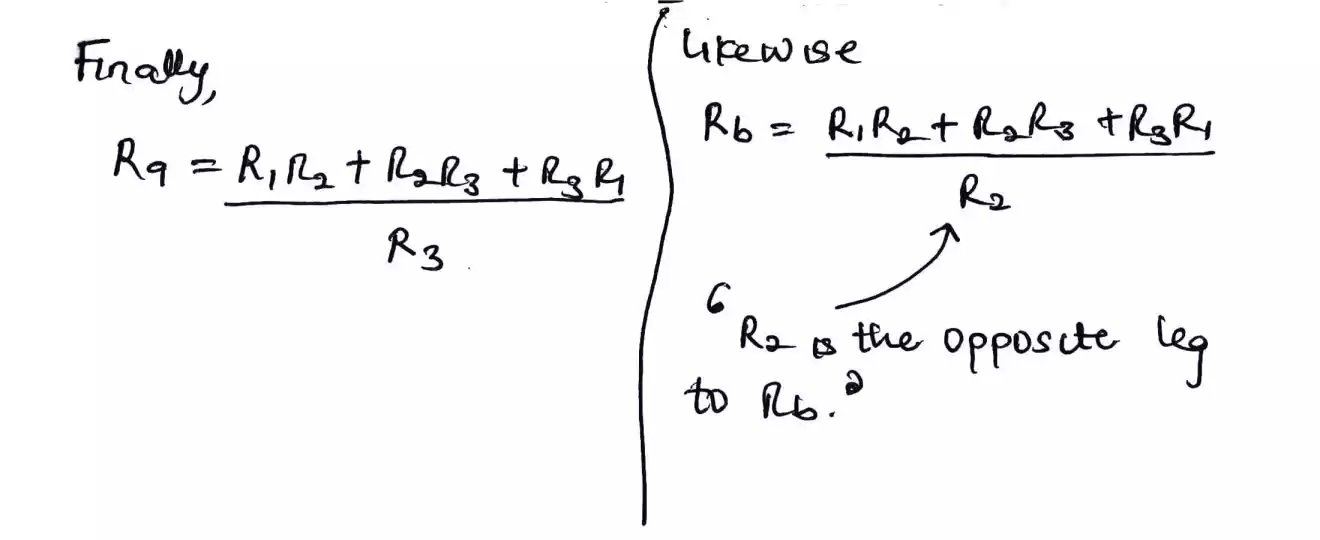
This step might look confusing a little bit but just go through it once more until you get the heck of it.
Tip
If you look at the previous two images, you will find where a pattern is shown - this can help in recalling the formula also.
Then after that we divide our first result which is (R1R2 + R2R3 + R3R1) by the leg opposite to our Ra which is R3 or we can say the leg not connected directly to Ra.
Likewise, Rb = (R1R2 + R2R3 + R3R1) / R2.
Note
Since the top side is equal for all case and only the bottom changes, recall the bottom as the leg opposite to the resistor we are looking for. And in this case Rb and the leg opposite is R2.
Now it’s your turn to do Rc and later check your answer.
Finally, let's try to recap all what we've just discussed by solving some examples.
Example on delta to star conversion
Ex.1 convert the delta network below to it star equivalent.
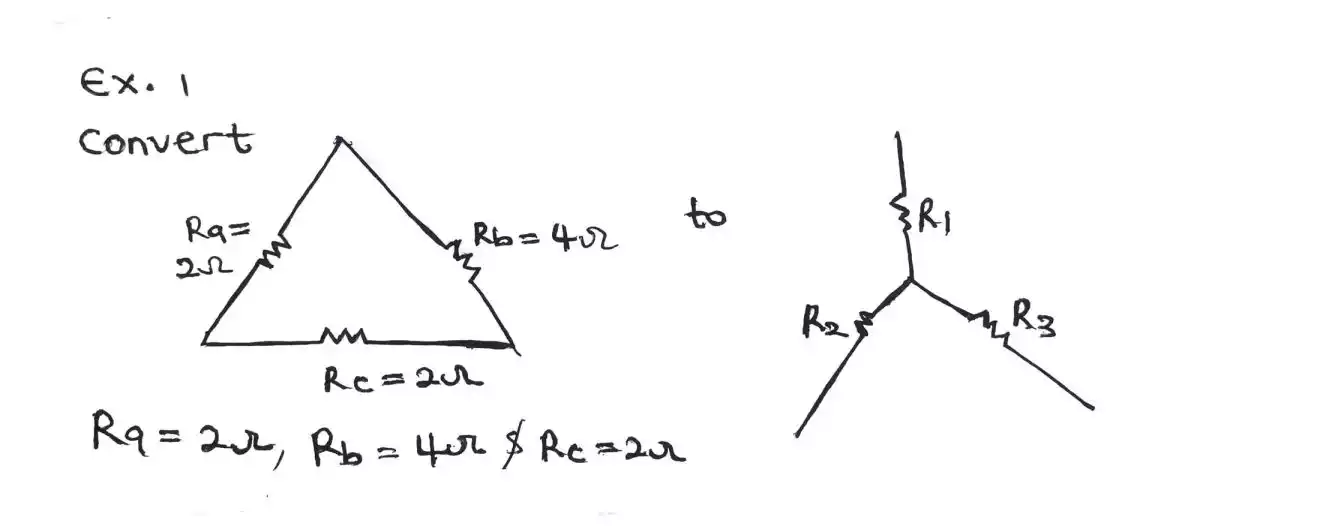
Firstly, we need to put the star network into the delta network and apply the corresponding formula
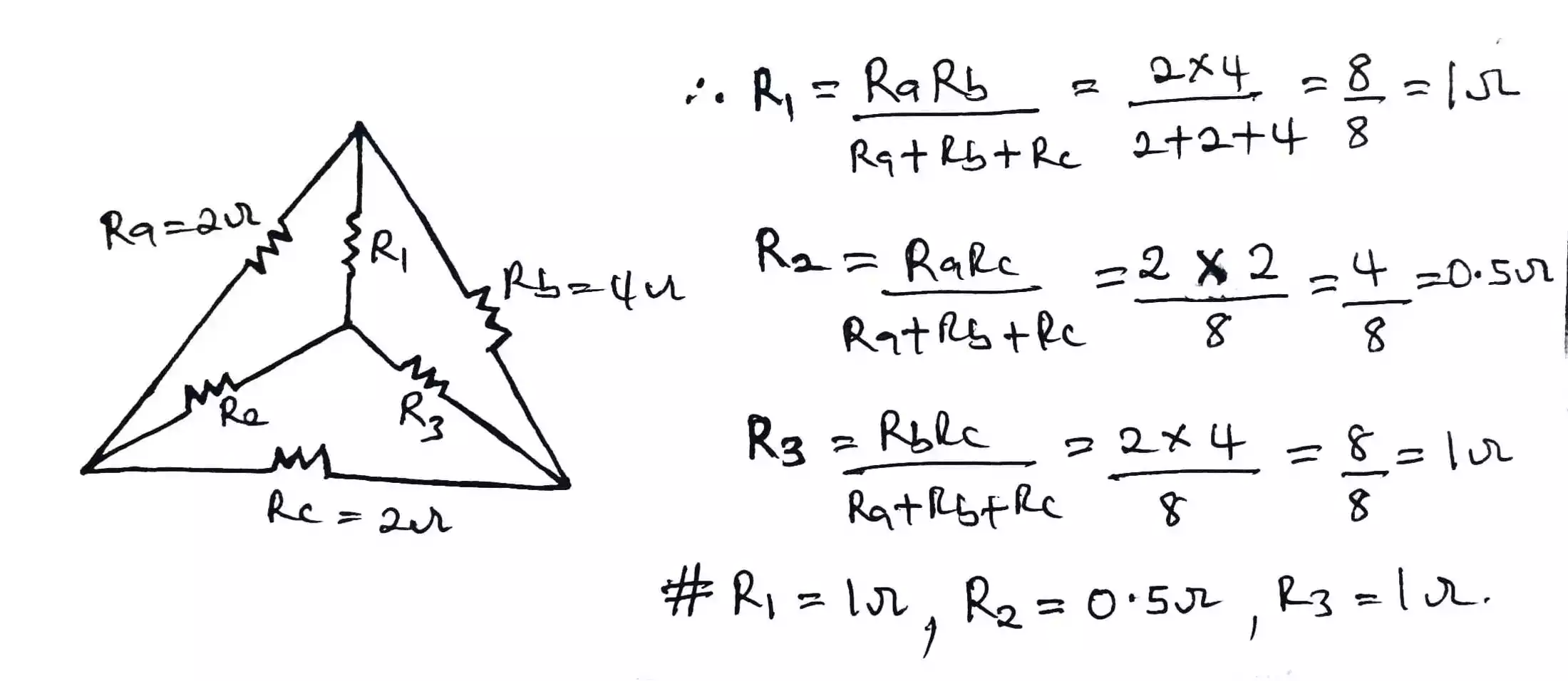
Example on star to delta conversion
Ex.2 let’s convert the star network gotten from Ex.1 back to the delta equivalent.
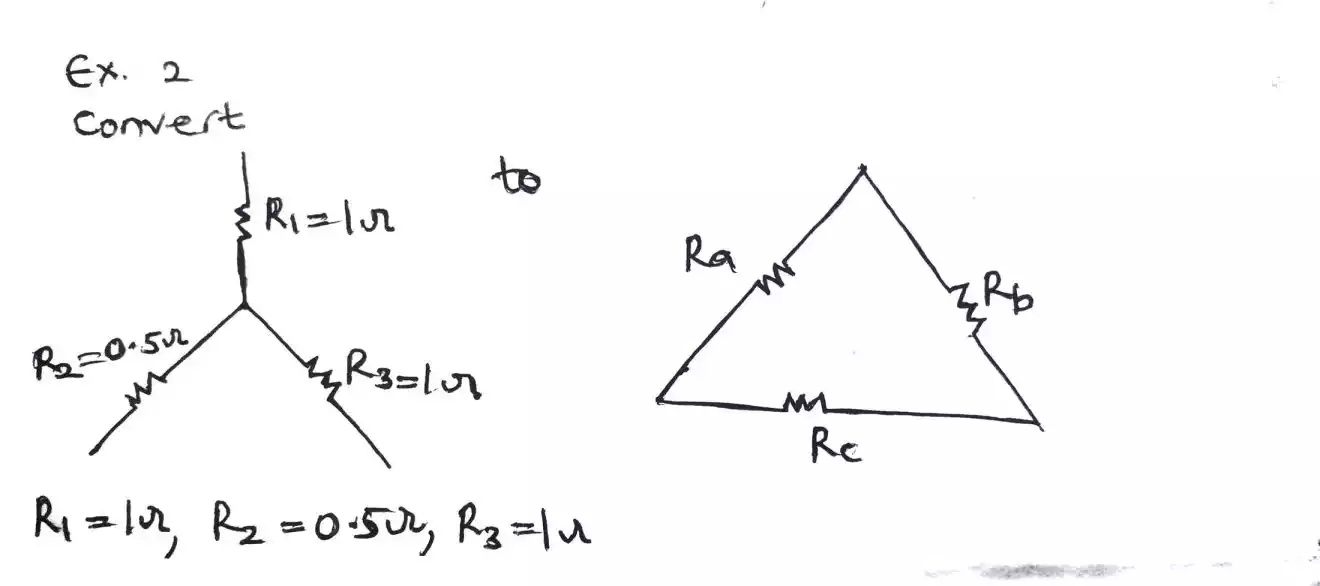
As always, we need to put the star network into the delta network and apply the corresponding formula
.webp)
Here comes the end on this section and now it's your turn to tell us if this article does help or there is any feedback you need to give. Cheers tooabstracter. :tada:

